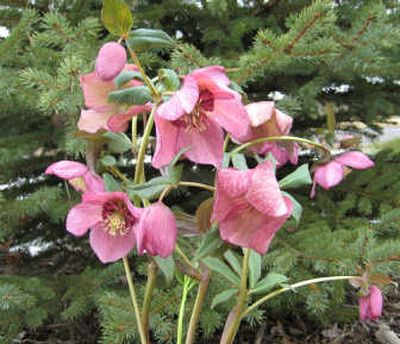Hellebores brighten early spring in the Inland Northwest

There are three reasons you’re going to love today’s plant. It’s one of the earliest perennials to bloom, making it a welcome sight this time of year. They are incredibly hardy. And, last but not least, deer will not eat the foliage. What more could a gardener ask for?
There are two main species of hellebores that will grow in the Inland Northwest – Christmas rose (H. niger) and Lenten rose (H. orientalis) – but my personal favorite is the latter and its hybrids (H. x hybridus).
In recent years, the Lenten rose has experienced a revolution of sorts. Thanks to the wonders of hybridization, the plant has become very popular, with the most incredible palette of blossom colors now available. Where we once just had white and pale green to choose from, we now face the difficult decision of whether to go with yellow, black, plum, apricot, pink or raspberry blossoms. In addition, many flowers are doubles and some have spotted petals.
Besides coming in so many delightful colors, the flowers last a long time and are fragrant. The nodding heads of the blossoms invite gardeners to get down on their knees and lift the flowers to see what wondrous colors lie within.
The plants are long-lived and very easy to grow, thriving in any type of soil as long as it is well-drained. They have shiny, dark green leaves that are palmate in shape.
During the spring, the flowers should be deadheaded when the blooms fade. At the end of the season, remove the old foliage to prevent the spread of disease and mulch the plants with organic material.
Hellebores can be propagated by carefully dividing the plant’s fragile roots in the fall. The new plant will be identical to the parent plant, although both will need a couple of growing seasons to recover and start blooming again.